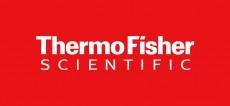AgenoLab first to install Roche’s new assay platform
AgenoLab already offers an impressive contract services line-up consisting of GMP production, microbiology, molecular biology, cell culture, tissue engineering, quality assurance, oncology, and histology and will hope that the new assay technology will enable them to offer faster and more accurate assay services
The xCelligence cell analysis system was originally developed by Acea Biosciences and is distributed by Roche Applied Science under a co-development and marketing agreement announced last November.
The marketing agreement is similar to that agreed with 454 Life Sciences and if the new new platform proves as successful as the 454 Genome Sequencer offerings, then it may only be a matter of time before Roche tries to bring Acea into its expanding portfolio of bolt-on businesses.
The system has already shown the potential to replace some animal tests, especially for the botulinum toxin, with Dr James O’Connell of Adea Biosceince stating that: “the combination of the xCelligence System with other high information content systems such as the 454 and Roche NimbleGen Systems will bring a new level of accuracy and information to in vitro testing that will significantly reduce the number of animal tests required in pharmaceutical development.”
The new assay platform was officially launched at the beginning of July, but AgenoLab had placed a purchase request for the system back in April.
“The fact that the first xCelligence Systems have already been ordered before the official product launch shows that there is a real need for this new technology in cell analysis,” said Manfred Baier, Head of Roche Applied Science.
The system uses a label-free electronic impedance-based sensing method to monitor cellular events in real time, providing information about cell number, cell viability, cell quality and morphology.
Detailed kinetic information can be gained about cell proliferation as well as compound and cell mediated cytotoxicity as the system takes less than 15 seconds to analyse the impedance of the 96 individual wells in its ‘E Plates’.
This has huge benefits over more traditional end-point assays that may miss specific physiological changes while the avoidance of labelling avoids any possible interference of the label with the biological system.
One example recently highlighted by Roche is the label-free monitoring of natural killer (NK) cell mediated cytolysis.
NK cells have been implicated in the recognition and destruction of various tumour cells and play a prominent role in various physiological and disease states.
The standard methods for measuring NK cell activity normally involve labelling the target cells with radioactive molecules and measuring the amount of radioactive species that are released when the cells burst due to an osmotic imbalance caused by the NK cells.
These radioactive release assays can be somewhat laborious due to the bureaucracy and precautions that need to be taken when working with radioactive compounds.
The xCellience system enabled researchers to monitor the growth and proliferation of target cancer cells seeded in the wells before the addition of the NK cells.
The reduction in the number of cells could then be dynamically followed as the NK cells killed of the cancer cells.
In a separate set of experiments the system was successfully used to quantitatively monitor antibody mediated cancer cell cytolysis.










